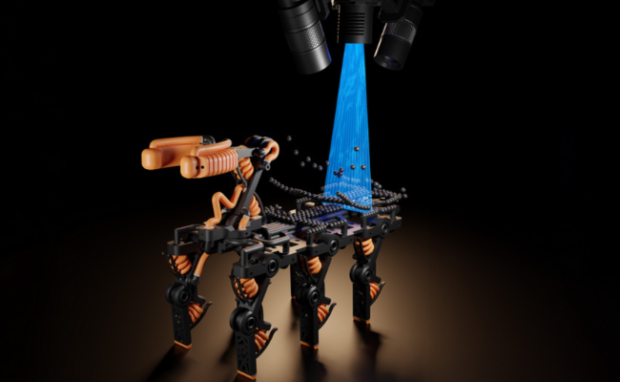Robotic hands have realistic bones, ligaments, and tendons
MIT and ETH Zurich engineers 3D-printed robotic hands with realistic bones, ligaments, and tendons. The team used slow-curing polymers instead of the usual fast-curing ones to mimic muscle flexibility and functionality. As a result, they have articulate fingers that let them pick up small objects and grasp relatively larger ones.
Robots will become a major part of daily life as more companies develop robotic workers and assistants. They want us to interact with these machines like regular coworkers, so they strive for a human-like design. This experiment is one of those projects that could help us get closer to this goal.
This article will discuss how experts created robotic hands with human-like muscles. Later, I will cover other interesting robotics projects.
How did the experts create their robotic hands?
I mentioned the engineers replaced the traditional 3D printing materials with slow-curing alternatives. However, it isn’t as easy as it sounds because the latter could clog machinery.
PopSci said epoxies and thiol-enes require separate manufacturing methods. That is why the designers added scanning with rapid printing adjustments to solve this issue.
Fortunately, their method worked, letting them publish their findings on the Nature journal website. More importantly, they discovered that slow-curing polymers allow them to create unique designs.
Three-dimensional scanning enables the 3D printer to monitor surface irregularities. Then, the printer’s feedback mechanism uses this data to adjust the necessary material “in real-time and with pinpoint accuracy,” said Wojciech Matusik, one of the study’s co-authors.
As mentioned, Matusik and his colleagues used their new technique to create robotic hands that closely resemble a human hand and its muscles. Moreover, they created the following objects to further test its potential:
- A heart-like fluid pump capable of transporting “liquids’ through its system
- A resilient metamaterial cube
- Six-legged robot topped with a sensor-informed two-pronged gripper
- An articulating hand capable of grasping objects with embedded sensor pads
“We wouldn’t have been able to make this hand with the fast-curing polyacrylates we’ve been using in 3D printing so far,” said Thomas Buchner, a doctoral student who worked on the robotic hands.
You may also like: Chatbots learn from what you type
“Robots made of soft materials, such as the hand we developed, have advantages over conventional robots made of metal,” said Robert Katzschmann, the first author of this 3D printing study.
“Because they’re soft, there is less risk of injury when they work with humans, and they are better suited to handling fragile goods,” Katzschmann added.
The team admits they must improve many aspects of their discovery, such as production methods and the polymers’ chemical compositions.
What are the other recent robotics projects?

I discussed this recent 3D printing method with ETH Zurich and MIT yesterday. They created it from a cheaper one called MultiFab, which the researchers introduced in 2015.
It uses thousands of nozzles to deposit tiny resin instead of only one. This unique setup enables high-resolution 3D printing with up to 10 materials at once. More importantly, it uses a new technique called vision-controlled jetting.
It uses four high-frame-rate cameras and two lasers that scan the print surface continuously and rapidly. The former captures and compiles pictures into a high-resolution depth map in less than a second.
Then, the system compares the depth map to the CAD (computer-aided design) model of the part the advanced 3D printer fabricates. Also, it adjusts the amount of resin it deposits to keep the object on target with the final structure.
The automated system can adjust any of its 16,000 nozzles, letting it control the fine details of the object it’s fabricating. “Geometrically, it can print anything you want made of multiple materials,” said Robert Katzschmann, Ph.D., one of the study’s co-authors.
You may also like: Scientists create muscles for robots
“There are almost no limitations in terms of what you can send to the printer, and what you get is truly functional and long-lasting,” he added. It is so precise that it can print intricate cavities and channels with wax. As mentioned, they created robotic hands with realistic bones and muscles with this method.
These innovations seem opportune as China announces its plans to mass-produce robots by 2025. President Xi Jinping said it is necessary to “promote industrial innovation with scientific and technological innovation, actively cultivate strategic emerging industries such as new energy, new materials…”
“…advanced manufacturing and electronic information actively cultivate future industries, accelerate the formation of new productive forces, and enhance new momentum for development.”
Conclusion
The Federal Institute of Technology Zurich and the Massachusetts Institute of Technology created unique robotic hands with their new 3D printing technology. It has bones and muscles that function realistically.
Soon, robots with such parts may become more common as more countries promise to adopt more machines. Your next coworker might be a robot, too!
Learn more about these robotic hands by reading its Nature journal webpage. Check out more digital tips and trends at Inquirer Tech.